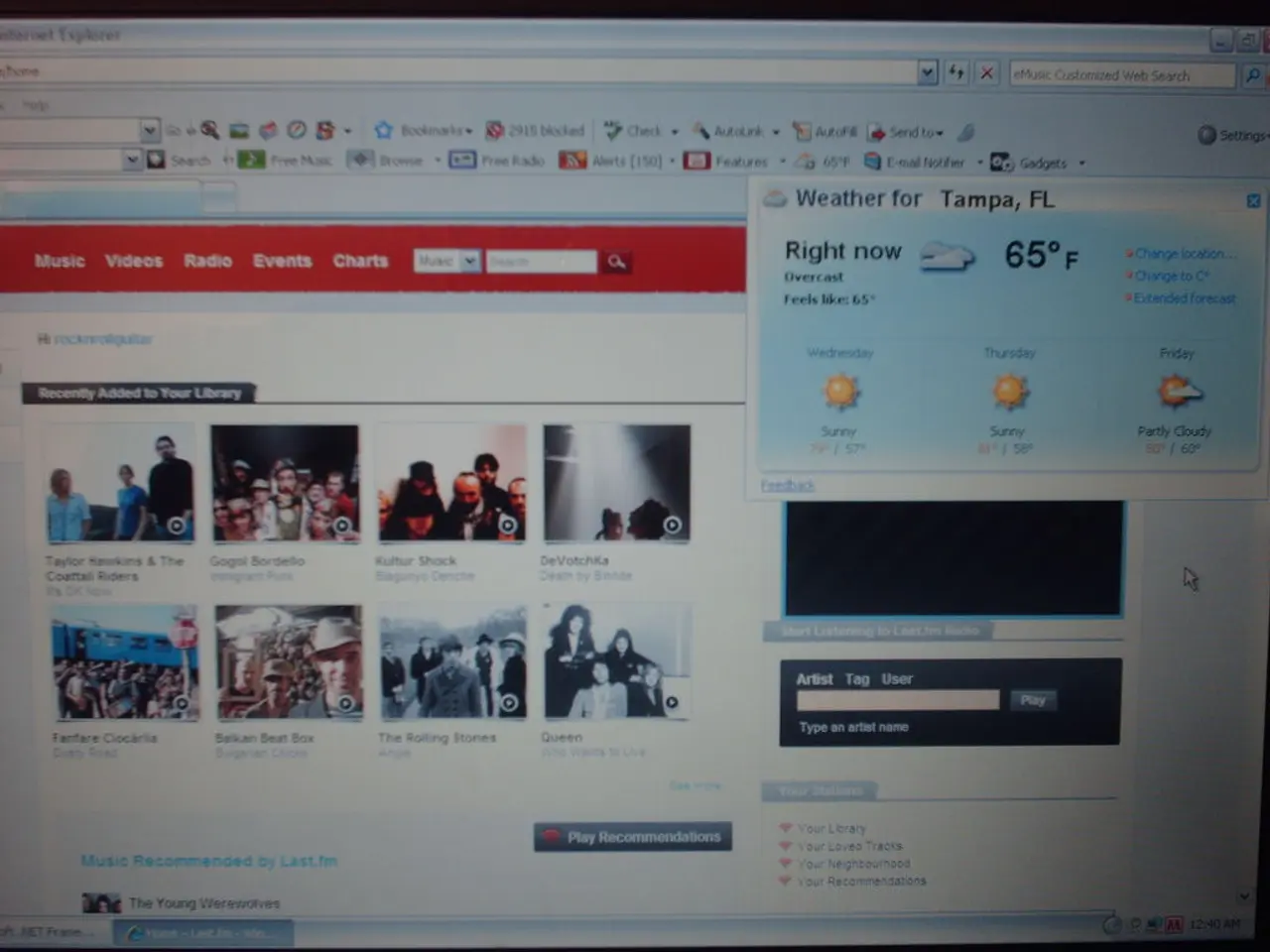Guide to Securely Sharing Your Online Content with a Restricted Group
In today's digital age, businesses and content creators are increasingly concerned about the security of their digital content, especially as they expand their operations online. Theft, plagiarism, and unauthorized access pose significant threats that can compromise the integrity of content and jeopardize personal data.
To securely share digital content with a limited audience, a layered security approach is recommended. This approach combines strong authentication, encryption, access controls, content protection, and network security.
Two-Factor Authentication (2FA)
Requiring all users to authenticate with 2FA is a crucial step. This method combines something users know (a password) with something they have (a code via app or SMS), thus preventing unauthorized access.
Encryption
Strong encryption, such as AES encryption for content at rest and TLS/SSL for data in transit, ensures all communication and stored digital content is protected from interception or tampering. HTTPS delivery should be enforced for all content access to secure the connection against man-in-the-middle attacks.
Watermarks
Embedding visible or invisible watermarks within digital content, such as images and videos, helps to uniquely identify each viewer’s copy or session. This discourages unauthorized redistribution by tracing leaks back to specific users.
Content Verification
Implementing digital signature or hash verification techniques ensures content integrity, allowing users to verify that the content has not been altered or corrupted during delivery or storage.
Regional Access Restrictions
Geo-blocking or IP-based filtering can be used to restrict content access only to predefined geographic regions, reducing exposure to unauthorized users outside the target area.
DDoS Protection
Network-level protections such as Web Application Firewalls (WAF), rate limiting, and cloud-based DDoS mitigation services protect servers delivering content from disruptive denial-of-service attacks.
For secure sharing workflows, consider using an encrypted paywall or secure platform requiring authenticated access with 2FA. Password managers or secure file-sharing services with end-to-end encryption and controlled sharing links that can expire, limit access count, or require additional passwords are also beneficial. Before sharing, analyze the content to avoid unintentional disclosure of sensitive information, and apply encryption tools for files to add a security layer.
This combined approach aligns with modern security frameworks, such as ISO/IEC 25389 for digital trust and safety, and industry best practices to control access, protect content integrity and privacy, and maintain service availability for your limited audience.
Professional content delivery networks offer protection against DDoS attacks for digital content security. Verifying social media accounts can help differentiate official pages from copies. If plagiarism is detected, reaching out to the offender via email is the first step, followed by consulting a lawyer if the content remains online.
Protecting digital content while sharing it with the world is essential. Distributed denial-of-service (DDoS) attacks can be harmful, as a malicious third-party sends numerous bogus user requests, causing server overload and denying access to legitimate users. Regional access to digital content can be restricted to specific regions or countries.
For those interested in creating, converting, publishing, and distributing eBooks, consider reading articles such as "Finding the Best eBook Creator," "How to Identify the Best eBook Conversion Services," and "Best Practices in Publishing & Distributing eBooks at Scale." Digital content security is a concern for various creative professionals, including content creators. DRM protected eBooks can be created and securely distributed using advanced technologies. Watermarks can be incorporated into infographics to secure them from being copied.
- To protect sensitive data and rising digital content from unauthorized access, content creators should consider incorporating a layered security approach, including two-factor authentication (2FA), encryption, and geo-blocking.
- For secure eBook creation, distribution, and protection, content creators should consider adopting DRM technologies, watermarking techniques, and accessing articles on best practices in eBook creation and distribution.




